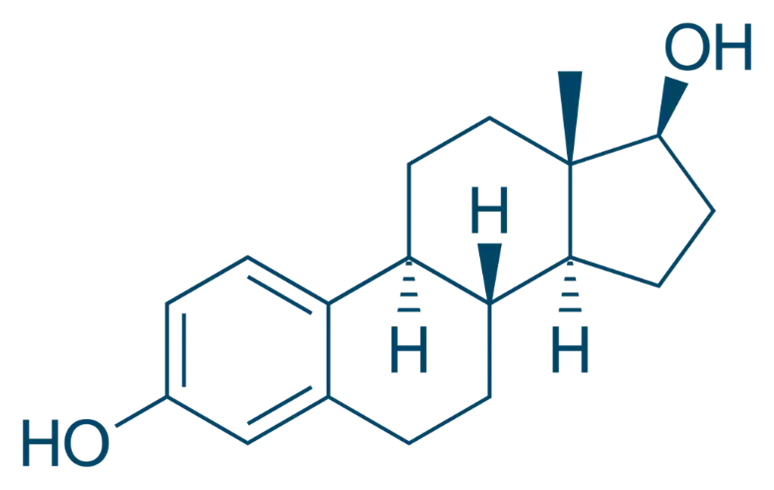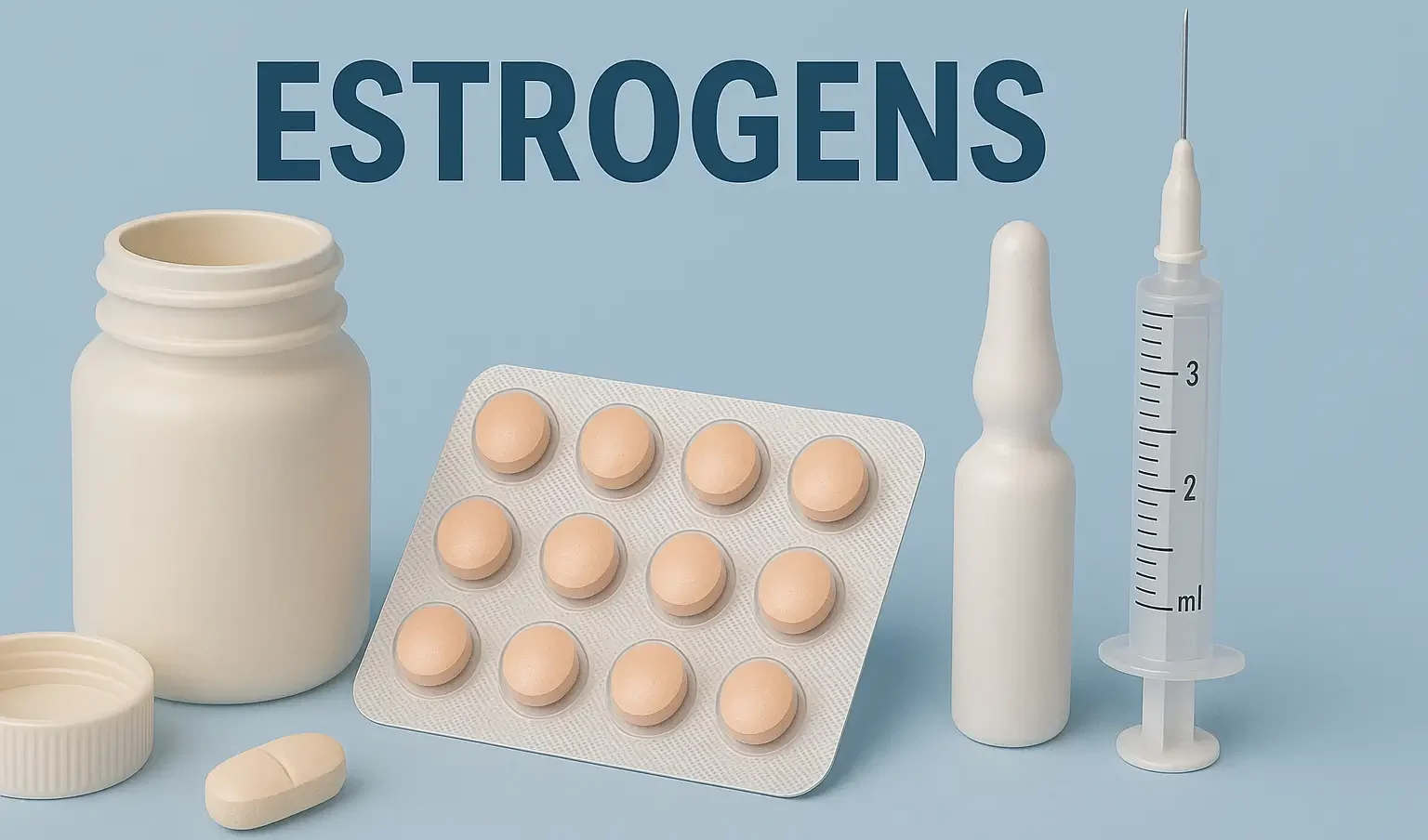Definition of Estrogens:
Estrogens are female sex hormones essential for reproductive tissue development, breast growth, and bone health.

Physiological Sources:
- Produced primarily by the ovaries (granulosa cells) and the placenta during pregnancy.
Advertisements
Types of Estrogens:
- Endogenous: Estradiol (most potent), estrone, estriol.
- Exogenous (Synthetic): Ethinylestradiol, conjugated estrogens.
Pharmacological Actions:
- Female Sexual Development: Growth and maturation of reproductive organs and secondary sexual characteristics.
- Bone Metabolism: Inhibit bone resorption, protecting against osteoporosis.
- Lipid Metabolism: Increase HDL and decrease LDL (cardioprotective).
- Blood Coagulation: Increase clotting factor synthesis (risk of thromboembolism with high doses).
Pharmacological Agents:
- Estradiol: Most potent natural estrogen, used in HRT and contraceptives.
- Ethinylestradiol: Synthetic estrogen in combined oral contraceptives.
- Conjugated Estrogen (e.g., Premarin): Used in HRT.
Mechanism of Action:
- Estrogen binds to estrogen receptors in target tissues, regulating gene expression to support secondary sexual characteristics, menstrual cycle regulation, and bone density maintenance.
Clinical Uses of Estrogens:
- Hormone Replacement Therapy (HRT): Relieve menopausal symptoms, prevent osteoporosis.
- Contraception: Combined with progestins.
- Menstrual Disorders: Treat amenorrhea and dysmenorrhea.
- Cancer Management: Breast and prostate cancer treatment.
Advertisements
Side Effects:
- Common: Nausea, breast tenderness, weight gain, mood changes.
- Serious: Increased risk of thromboembolism, stroke, breast cancer, endometrial cancer (if unopposed by progesterone), and liver dysfunction.

